some multicultural aspects of afterlife
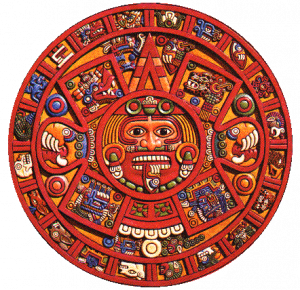 |
There were different realms a person could go to in their afterlife. Warriors who died in battle or by sacrifice either went to a paradise in the east and joined the sun’s rising in the morning, or joined the war god Huitzilopochtli in battle. Women who died in childbirth were considered just as courageous and honorable as warriors who died, and thusly went to a paradise in the west and joined the sun’s descent in the evening.There was greater esteem for people who died from premature but honorable deaths than for people who avoided these endings and managed to grow into old age
reference: Ancient Aztec Perspective on Death and Afterlife – www.christicenter.org image: Ancient Aztec Perspective on Death and Afterlife – www.christicenter.org |
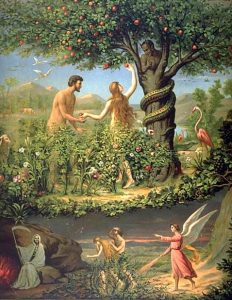 |
The Garden of Eden – Hebrew גַּן־עֵדֶן , also called Paradise, is the biblical garden of God described in the Book of Genesis and the Book of Ezekiel.The world to come, age to come, and heaven on Earth are eschatological phrases reflecting the belief that the current world or current age is flawed or cursed and will be replaced in the future by a better world, age, or paradise. The concept is related to but differs from the concepts of heaven, the afterlife, and the Kingdom of God in that heaven is another place or state generally seen as above the world, the afterlife is generally an individual’s life after death, and the Kingdom of God could be in the present such as realized eschatology or the future
reference: wikipedia, www.angelcasiano.com image: Garden of Eden – www.fi.pinterest.com/ |
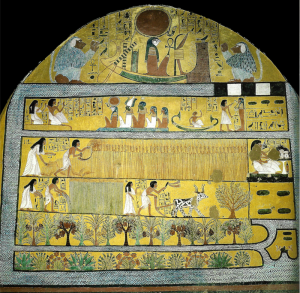 |
The ancient Egyptians believed that life on earth was only one part of an eternal journey which ended, not in death, but in everlasting joy. One was born on earth through the benevolence of the gods and the deities known as The Seven Hathors then decreed one’s fate after birth; the soul then went on to live as good a life as it could in the body it had been given for a time. When death came, it was only a transition to another realm where, if one were justified by the gods, one would live eternally in a paradise known as The Field of Offerings known to the Egyptians as A’aru. The Islamic version of heaven is a paradise where the faithful lie upon couches in a climate-controlled environment surrounded by bashful, dark-eyed virgins, chaste as the sheltered eggs of ostriches. It was the ancient Persians who gave us the word paradise, which means a walled garden or park, and Zoroastrianism in particular gave us notions of the afterlife that were adapted by the Jews, Muslims and Christians
reference: www.ancient.eu image: www.wikipedia |
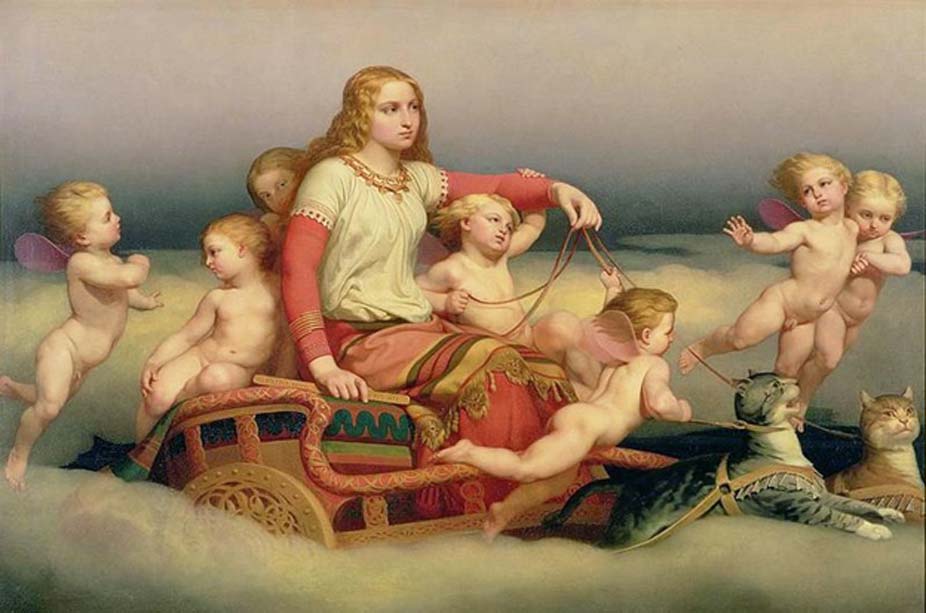 |
In Norse mythology, Fólkvangr Old Norse field of the host or people-field or army-field is a meadow or field ruled over by the goddess Freyja where half of those that die in combat go upon death, whilst the other half go to the god Odin in Valhalla. Others were also brought to Fólkvangr after their death. This field or meadow is believed to be the domain of Freyja, a Vanir, who is one of the most prominent goddesses in Norse mythology. It also became a home for the goddess’ specially selected Viking warriors following their earthly demise
reference: wikipedia image: Freyja Seeking Her Husband – 1852 by Nils Blommér. Public Domain
|
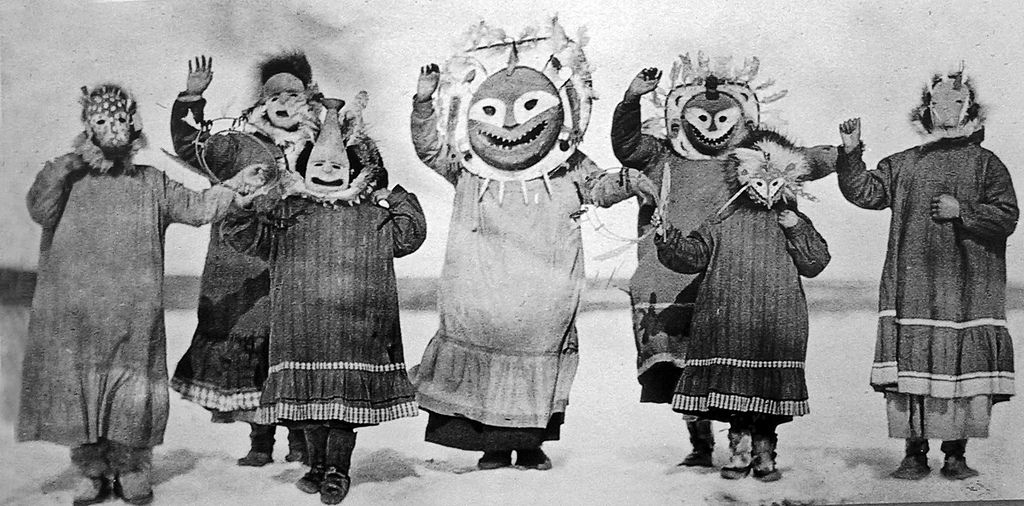 |
Inuit make their homes across the vastness of Canada’s Arctic belong to a much larger family that extends from the Bering Sea through Alaska and northern Canada to Greenland. Their mythology is a repository of Inuit culture, passed down by elders through generations to enrich and enlighten. Death was considered to be a passage to a new existence. There were two lands of the dead: one in the sky and one in the sea. The Inuit in Greenland considered the land in the sea more attractive because people living there enjoyed perpetual success in whale hunting. Those in the sky, on the other hand, led dull existences. It was not the moral behavior of the deceased that determined the location of his afterlife. The Canadian and Alaskan Inuit believed the most attractive afterlife was found in the sky. The Great Feast of the Dead was given and the hosts’ social status was demonstrated by the quantity of food, furs, clothing, and implements that were given away. The Bladder Feast, an important calendar feast celebrated in Alaska from Kodiak Island to Point Hope, was held in midwinter. At this feast, the bladders of all the seals that had been caught during the previous year were returned to the sea in order that their souls might come back in new bodies and let themselves be caught again
reference: www.encyclopedia.com, www.thecanadianencyclopedia.ca
image: www.quora.com The Inuits and the Aurora Spirits
|
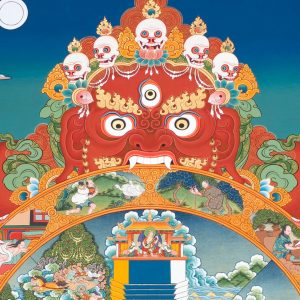 |
The Tibetan text Bardo Thodol, collection is titled The Great Liberation by Hearing and is intended to guide one through, the experiences that the consciousness has after death, the interval between death and the next rebirth. The text also includes chapters on the signs of death and rituals to undertake before one’s next birth, when one’s consciousness is not connected with a physical body. Buddhism expanded the whole concept to distinguish six or more similar states, covering the whole cycle of life, death, and rebirth. The departed soul must wander for forty-nine days, confronted by terrifying deities and illusions
reference: The Tibetan Book of the Dead, www.wikipedia.com
image: www.tricycle.org
|
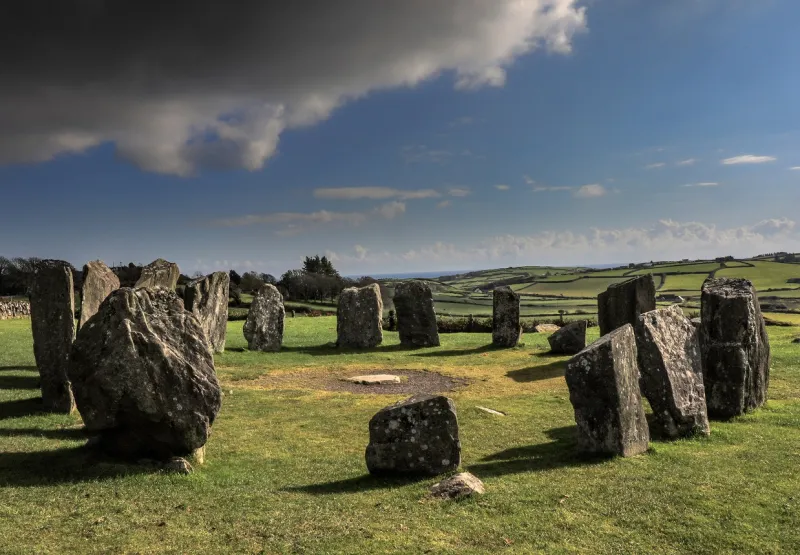 |
Celtic paganism was one of a larger group of Iron Age polytheistic religions of the Indo-European family. The otherworld was variously called the Land of the Living, Delightful Plain, and Land of the Young and was believed to be a country where there was no sickness, old age, or death. The druids, the early Celtic priesthood, taught the doctrine of transmigration of souls:
reference: Encyclopædia Britannica, wikipedia, www.learnreligions.com image: drombeg stone circle wwwtheirishspirit.com/ |
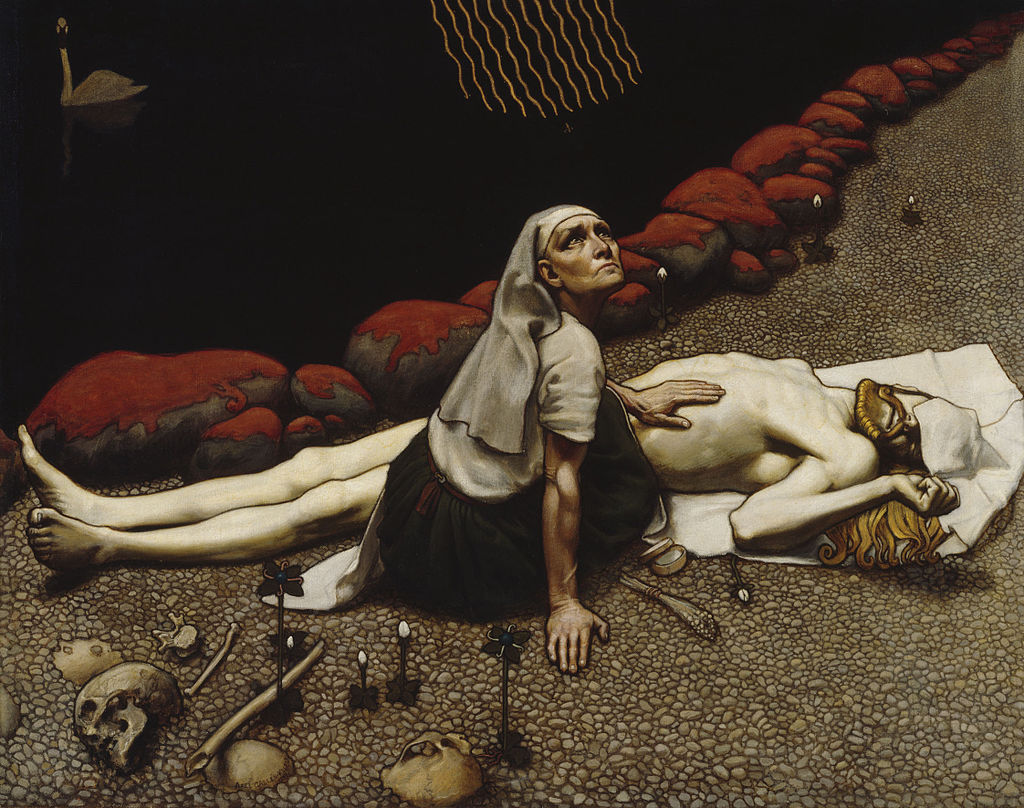 |
Manala, in Finnish mythology, the realm of the dead. The word is possibly derived from the compound maan-ala, “the space (or area) under the earth.” It is also called Tuonela, the realm of Tuoni, and Pohjola, derived from the word pohja, meaning bottom and also north. The Finnish underworld and related concepts among other Finno-Ugric peoples, such as the yabme-aimo of the Sami, are the product of hundreds of years of various influences and, as a result, do not provide a consistent cosmology. Manala is often reached by crossing a fiery stream, the river of death, either over a narrow bridge or by a boat brought by a denizen of the otherworld reference: Encyclopædia Britannica – Manala, Finnish mythology
image: Lemminkäisen äiti by Akseli Gallen-Kallela, 1897 tempera on canvas
|
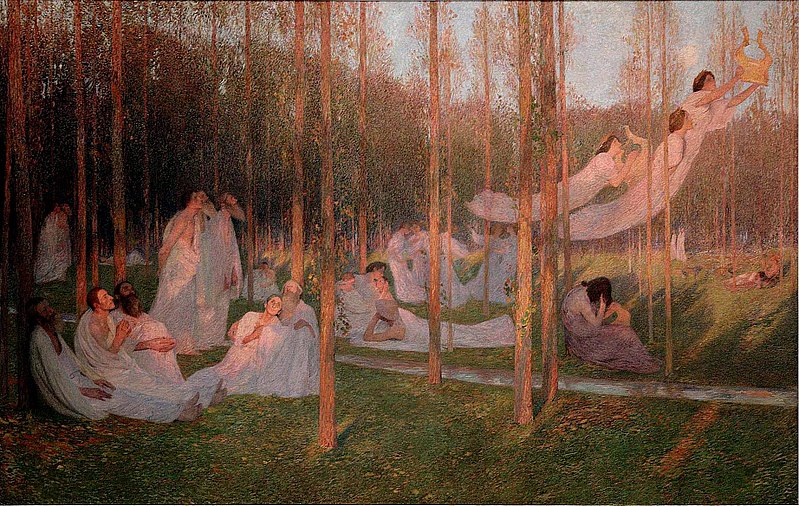 |
Elysium, also called Elysian Fields is a conception of the afterlife that developed over time and was maintained by some Greek religious and philosophical sects and cults. Initially separate from the realm of Hades, admission was reserved for mortals related to the gods and other heroes. Later, it expanded to include those chosen by the gods, the righteous, and the heroic, where they would remain after death, to live a blessed and happy life, and indulging in whatever employment they had enjoyed in life. The Elysian Fields were, according to Homer, located on the western edge of the Earth by the stream of Okeanos. In the time of the Greek poet Hesiod, Elysium would also be known as the Fortunate Isles or the Isles or Islands of the Blessed, located in the western ocean at the end of the earth
reference: Encyclopædia Britannica, wikipedia image: Sérénité – Henri-Jean Guillaume Martin 1899 |
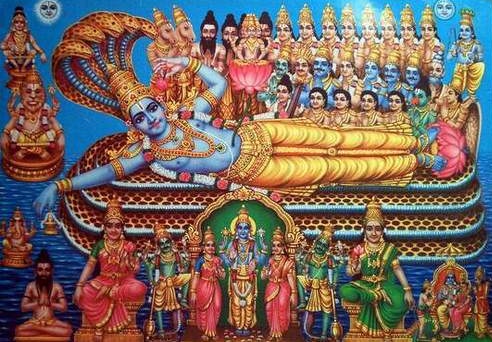 |
The ultimate destination for souls who have achieved moksha, or salvation, Vaikuntha is the highest of heavens in Hinduism and is said to be the place where Vishnu, the supreme god, resides. Hinduism has very distinct teachings about life after death. Hindus accept reincarnation – the belief that, after death, the atman – soul of a person passes into a new body and life. This new life depends on how the person lived their previous life. Hindus believe in karma, which is the sum of the good and bad actions taken. Good karma helps with a better rebirth. As all living creatures are part of the process of reincarnation, Hindus believe it is possible to be reborn as animals, insects or plants. Humans are viewed as the highest form of life, but the ultimate goal of a Hindu is to break the cycle of reincarnation they are in and achieve Moksha reference: wikipedia image: www.bharathgyan.com |
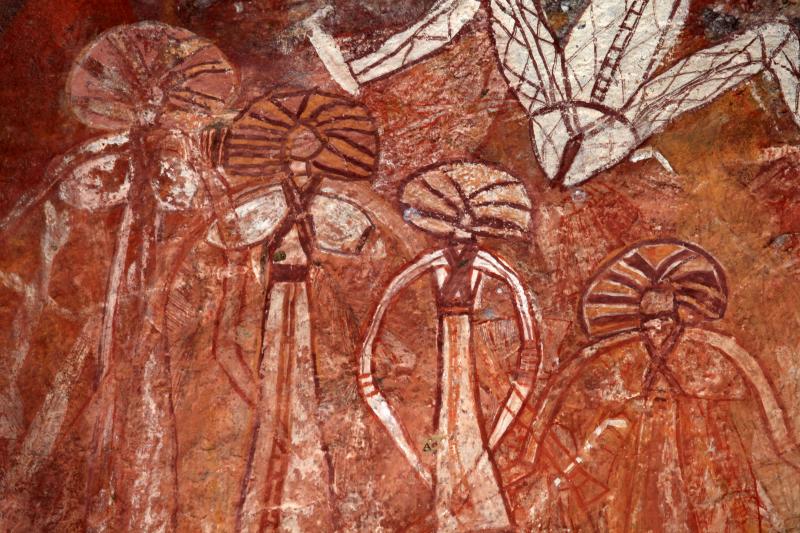 |
The Aboriginals believed in resurrection, in this case being that, one by one, spirits are being resurrected into living beings back in Australia. They also believe that life is a never-ending cycle. You are born, you die, you are born again. A person who has passed away goes to the land of the Dreaming Ancestors, which is where all of their gods and ancestors are. Some groups buried their dead bodies and then tried to conceal the site as much as possible by adding sand, bark, dirt, bushes, and other things to stop the spirit from leaving the body and haunting the group. The dead’s possessions were either buried with them, or destroyed. A deceased person’s name was forbidden in the group, and if someone else had that same name, it would have to be changed
reference: lifeafterdeathinformation.weebly.com image: Aboriginal rock art in Kakadu National Park, funeralguide.co.uk |
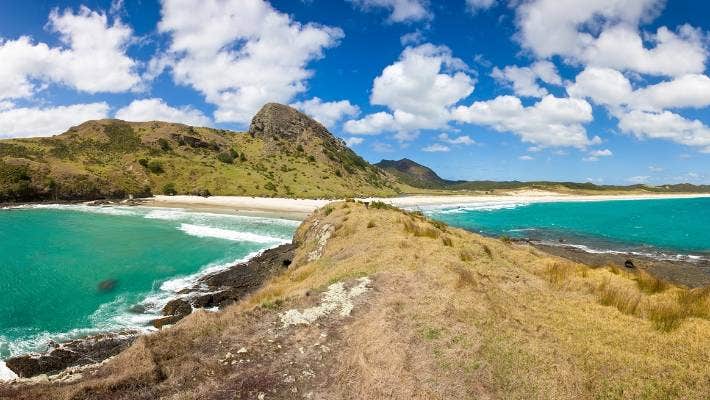 |
Traditional Maori believe that the spirit continues to exist after death and that the deceased will always be a part of the marae traditional meeting place Once someone has died they will go to the spirit world. Spirits Bay, believed to be one of the most haunted spots in New Zealand and a famous spot for supernatural beings, is considered a sacred place in Māori culture. Many Māori legends contain mentions of apparitions and paranormal occurrences. It is claimed that long deceased family members may appear to warn of upcoming danger. Universe is inhabited by wairua.They roam in space, in forests, on mountains and are believed to be human souls. They are all around you but you cannot see them. Ceremony known as tuku wairua realeases the spirit, allowing it to leave
reference: wikipedia, teara.govt.nz, living by maori values – moko mead image: wikipedia – view of spirits bay from the eastern end |
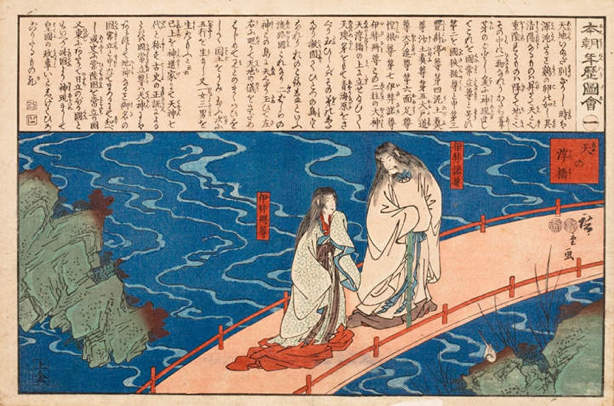 |
Takamagahara – 高天原, Plain of High Heaven, is a place in Japanese mythology. In Shinto, Takamagahara or Takama no Hara is the dwelling place of the heavenly gods. It is believed to be connected to the Earth by the bridge Ama-no-uki-hashi the Floating Bridge of Heaven. In Shinto, ame heaven is a lofty, sacred world. Some scholars have attempted to explain the myth of descent of the gods from the Takamagahara as an allegory of the migration of peoples. However, it is likely to have referred from the beginning to a higher world in a religious sense
reference: wikipedia image: Ame no Uki Hashi – The Floating Bridge of Heaven by Utagawa Hiroshige, circa 1847-1852 |
 |
The Cherokee revered the Great Spirit, simply referred to as Unetlanvhi, or Creator, who presided over all things and created the Earth. The Great Spirit is said to be omnipotent, omnipresent, and omniscient. The Unetlanvhi was said to have made the earth to provide for its children, and should be of equal power to Dâyuni’sï . The Wahnenauhi Manuscript says that God is Unahlahnauhi, meaning maker of all things and Kalvlvtiahi, meaning The one who lives above. In most myths the Great Spirit is not personified as having human characteristics or a physical human form. Traditionally there is no universal evil spirit corresponding to Satan in Cherokee Theology
reference: wikipedia image: A postcard depicting Cherokee people ready for The Green Corn Dance – wikipedia |
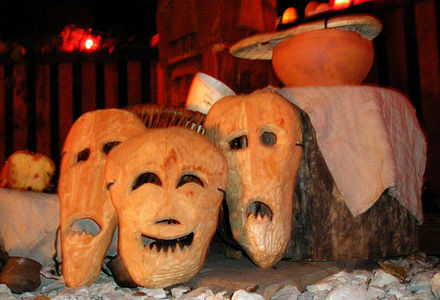 |
After death, Slavs travel into the land of eternal happiness – Nawia. They would return to the world of the living a few times during the year. Rituals connected to the forefathers – the Dziady – took place in accordance with the principal that spirits could do favours for the living – such as teaching them moral lessons – and the living can could favours for the dead – the custom of offering food and drinks. Fires were lit on cemeteries and special grumadki pieces of wood were placed at crossroads in order to point the way back towards heaven. Tribute was paid through tournaments, song, and dance. In some regions of Poland the custom of feeding ancestral souls was practiced until the early 20th century. Chrisitianisation resulted in limiting the holidays of the dead to two days per year – it is now on 1st November that Poles celebrate All Souls’ Day, also known as the Commemoration of All the Faithful Departed and the Day of the Dead. On 2nd of November, Zaduszki Day, they pray for the souls of the dead reference: culture.pl – 9 Slavic Rituals & Customs of Ye Olden Days Nov 9 2015
image: Foods for the spirits of the deceased and masks kraboszki symbolizing the deceased – Dziady 2009, Mazovian temple
|
 |
The Christian end-time expectation is directed not only at the future of the church but also at the future of the individual believer. It includes definite conceptions of the personal continuance of life after death. Many baptized early Christians were convinced they would not die at all but would still experience the advent of Christ in their lifetimes and would go directly into the Kingdom of God without death. In the Nicene Creed the life of the Christian, including Orthodox theologies, is characterized as eternal life. In the Gospels and in the apostolic letters, eternal is first of all a temporal designation: in contrast to life of this world, eternal life has a deathless duration.
The Roman Catholic Church teaches that after death there is a state of Purgatory. This is a place where some people who have sinned are purified in a cleansing fire, after which they are accepted into Heaven. The Eastern Orthodox Church and Protestant churches have no doctrine of purgatory although some teach the existence of an intermediate state
reference: Encyclopædia Britannica
image: The Ladder of Divine Ascent – Saint Catherine’s Monastery, the ladder has 30 rungs representing the 30 stages of ascetic life
|
